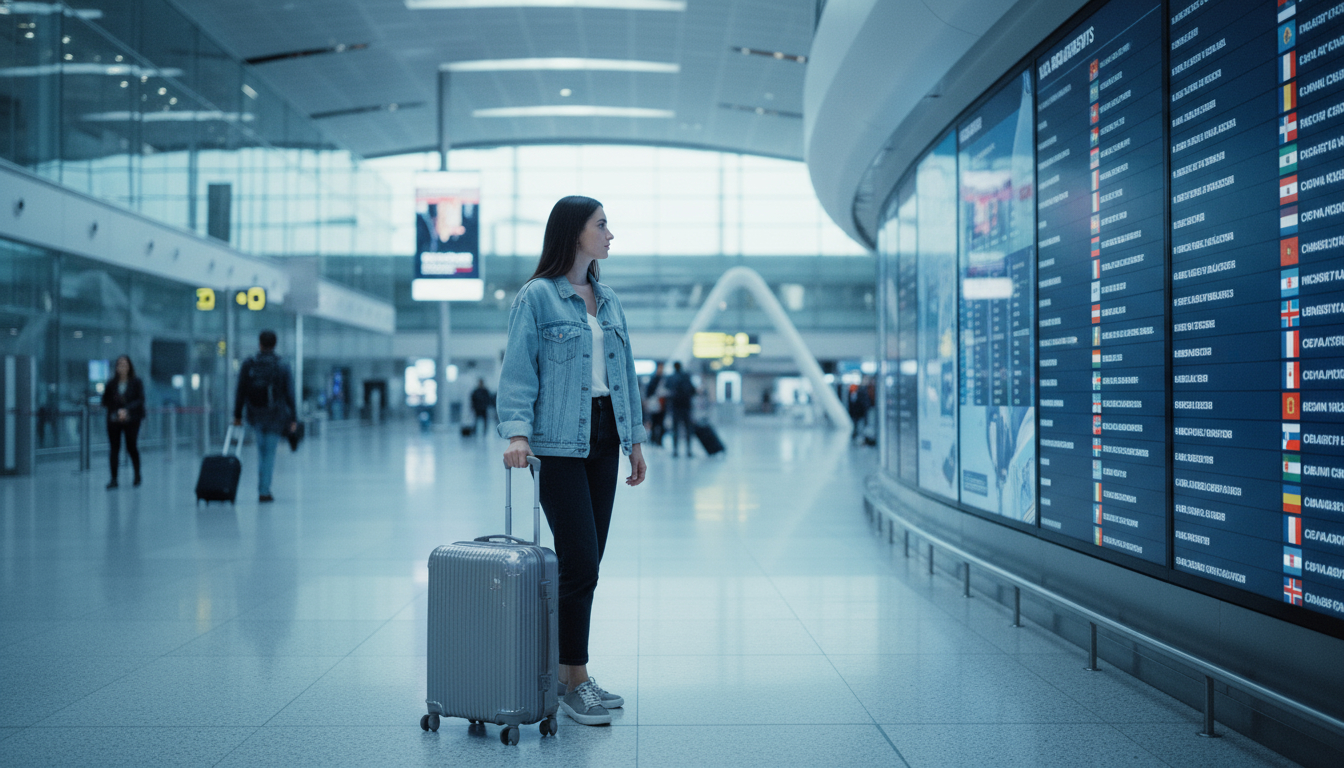The world of international travel is in a state of constant, often rapid, flux. As geopolitical landscapes shift and digital identity verification becomes the norm, the rules governing who can travel where—and for how long—are continually being rewritten. For the modern globetrotter, keeping pace with Navigating Changing Visas is no longer a peripheral concern but a crucial component of trip planning. The year 2025, in particular, is shaping up to be a watershed moment, marked by the widespread adoption of new digital authorization systems, stricter entry requirements, and the increasing complexity of work-from-anywhere digital nomad visas. A successful journey in this new environment hinges on preparation, technology, and a proactive mindset. Ignoring the subtle shifts in immigration policy can turn an eagerly awaited adventure into a nightmare at the border control.
The New Digital Frontier: ETIAS, eVisas, and Digital Nomad Schemes
A significant driver of the complexity in Navigating Changing Visas for 2025 is the acceleration of digitalization in border management. Paper passports and physical stamps are being phased out in favor of electronic authorization and biometric data.
The Rise of Travel Authorization Systems
The European Union’s implementation of the European Travel Information and Authorisation System (ETIAS) is the most prominent example. Similar to the United States’ ESTA or Canada’s eTA, ETIAS is not a visa but a mandatory pre-screening security clearance for visa-exempt travelers entering the Schengen Area. By 2025, understanding the distinction between a visa, an eVisa, and an electronic travel authorization will be paramount. An eVisa is an electronic version of a traditional visa, usually applied for and granted online, whereas ETIAS is a blanket permission to travel based on a security check, valid for multiple entries over several years.
The Digital Nomad Visa Boom
The work-from-anywhere trend has compelled dozens of nations, from the Caribbean to Southeast Asia, to introduce attractive Digital Nomad Visas. These are not tourist visas; they are specific temporary residence permits designed for remote workers. While enticing, the requirements for these visas are constantly evolving, including minimum income thresholds, proof of self-employment, and local tax implications. Navigating Changing Visas now involves understanding the fine print of these programs, particularly the differences in duration, cost, and the required health insurance coverage.
Key Strategies for Navigating Changing Visas in 2025
Faced with this ever-changing mosaic of regulations, travelers must adopt a structured and systematic approach. Simply checking one government website a month before departure is no longer sufficient.
1. Proactive Monitoring with Reliable Tools
Reliance on outdated information is the single biggest pitfall. Savvy travelers should utilize specialized tools and official resources. Invest in access to professional travel databases (often used by airlines or travel agencies) that provide real-time updates on entry requirements, including health protocols and visa processing times. Furthermore, set up Google Alerts for the consular news of your destination country and your passport country. This proactive step is essential for Navigating Changing Visas and catching last-minute policy shifts.
2. The Golden Rule of Timing: Plan and Apply Early
Visa processing times are becoming increasingly unpredictable due to backlogs, security checks, and the sheer volume of applications. What once took two weeks might now take two months. For any trip requiring a traditional visa, aim to submit the application at least three months in advance, even if the processing window suggests less time. This buffer protects you from bureaucratic delays and unforeseen requests for additional documentation, which are common when Navigating Changing Visas processes.
3. Documentation Scrutiny: The Devil is in the Detail
Minor errors are the primary reason for visa rejection. Review all required documents—from proof of financial stability and travel insurance to passport photos—with meticulous attention to detail. For example, some countries now require bank statements to show transactions over a full three-month period, not just a final balance. Ensure your passport is valid for at least six months beyond your intended departure date and has sufficient blank pages. The exact specification of a passport photo (size, background color, head-to-chin height) is another frequently overlooked detail.
4. Understand Reciprocity and Bilateral Agreements
Your country of citizenship plays a huge role in Navigating Changing Visas. Many visa rules are based on reciprocity—if your country imposes restrictions, others may reciprocate. Stay informed about any new bilateral agreements or diplomatic tensions between your home country and your planned destination, as these often lead to sudden, unannounced changes in visa policy. For instance, a temporary political disagreement might result in the suspension of a visa-on-arrival program.
Adapting to the Unexpected: Health and Security Checks
Beyond the traditional visa stamps, the year 2025 brings an increased focus on health and security as a requirement for entry. Many countries are integrating these checks into the visa application process.
- Mandatory Comprehensive Insurance: More countries are requiring proof of travel medical insurance that covers a high minimum amount, including repatriation and COVID-19-related treatment. This insurance must often be valid for the entire duration of stay.
- Biometric Data and Interviews: Expect increased requests for biometric enrollment (fingerprints and facial scans) and mandatory in-person interviews, even for what were previously simple eVisa applications. This enhanced security measure is a growing global trend in Navigating Changing Visas requirements.
In conclusion, the key to successful international travel in 2025 lies in treating visa and entry requirements as a continuous process, not a one-off task. By embracing proactive monitoring, planning applications with ample time, and maintaining impeccable documentation, travelers can confidently face the new digital landscape of border control. The rewards for this diligence are seamless transitions across borders and the ability to focus entirely on the experience of the journey itself.

 The 2025 Border Maze: Navigating Changing Visas Tips and Tricks for Seamless Travel">
The 2025 Border Maze: Navigating Changing Visas Tips and Tricks for Seamless Travel">
